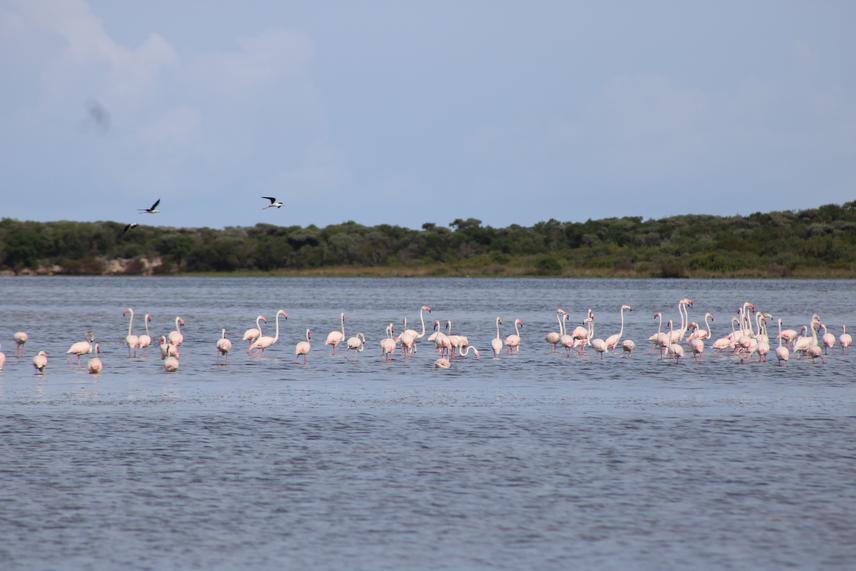Chrysanth Henri Mahavilahy
This project aims to protect one of the most ecologically distinctive wetland complexes in south-western Madagascar, located in the Velondriake-Antsirabe wetland complex. Characterised by shallow alkaline lakes, surrounding dry forests, mangroves, and coastal ecosystems, this landscape harbours a high concentration of endemic and threatened species – many of which are found nowhere else on Earth.

A large flock of Greater Flamingos (Phoenicopterus roseus) foraging in the shallow alkaline waters of the Velondriake-Antsirabe wetland complex, an important site for migratory and resident waterbirds. © Oscar G. Miranda.
Despite its biodiversity importance, the area remains unprotected and poorly studied. Threats such as habitat degradation, increasing predation pressures, and lack of ecological awareness among local communities place this unique ecosystem at risk. Our initiative, led by the Madagascar Nature Conservation (MNC) NGO, is the first conservation research project to focus on the formal protection of this wetland through Ramsar Site designation.
Project Objectives:
The project will focus on five key components:
1. Waterbird Population Surveys
We will conduct standardised counts of waterbird species, with a focus on threatened and endemic birds, to inform the ecological value of the site for Ramsar criteria.
2. Threat Assessment to Wetlands and Surrounding Habitats
We will identify and quantify environmental threats, including habitat disturbance, pollution, and invasive species, through community interviews and field surveys.
3. Estimation of Predation Pressure on Shorebirds
As part of a broader study on endangered shorebirds, we will estimate the impact of natural and introduced predators using monitoring techniques.
4. Community Engagement and Capacity Building
Through participatory workshops and training sessions, we aim to build local support for sustainable wetland use and conservation. We are working closely with communities to co-create conservation actions that align with traditional knowledge and local livelihoods.
5. Preparation of the Ramsar Site Nomination Dossier
Based on the ecological and social data collected, we will prepare and submit the Ramsar Information Sheet to the national authorities, aiming to designate this site as a Wetland of International Importance.
Why This Matters:
This project represents a critical opportunity to protect an overlooked yet biologically significant ecosystem in Madagascar. By empowering local communities and establishing MNC as a local leader in wetland conservation, we aim to create a sustainable, long-term model for community-based environmental stewardship.
Our work will not only lay the foundation for Ramsar protection but will also strengthen conservation awareness in a region where few initiatives currently exist. With support from The Rufford Foundation, this project will catalyse local action, improve environmental education, and help secure a future for Madagascar’s unique biodiversity.